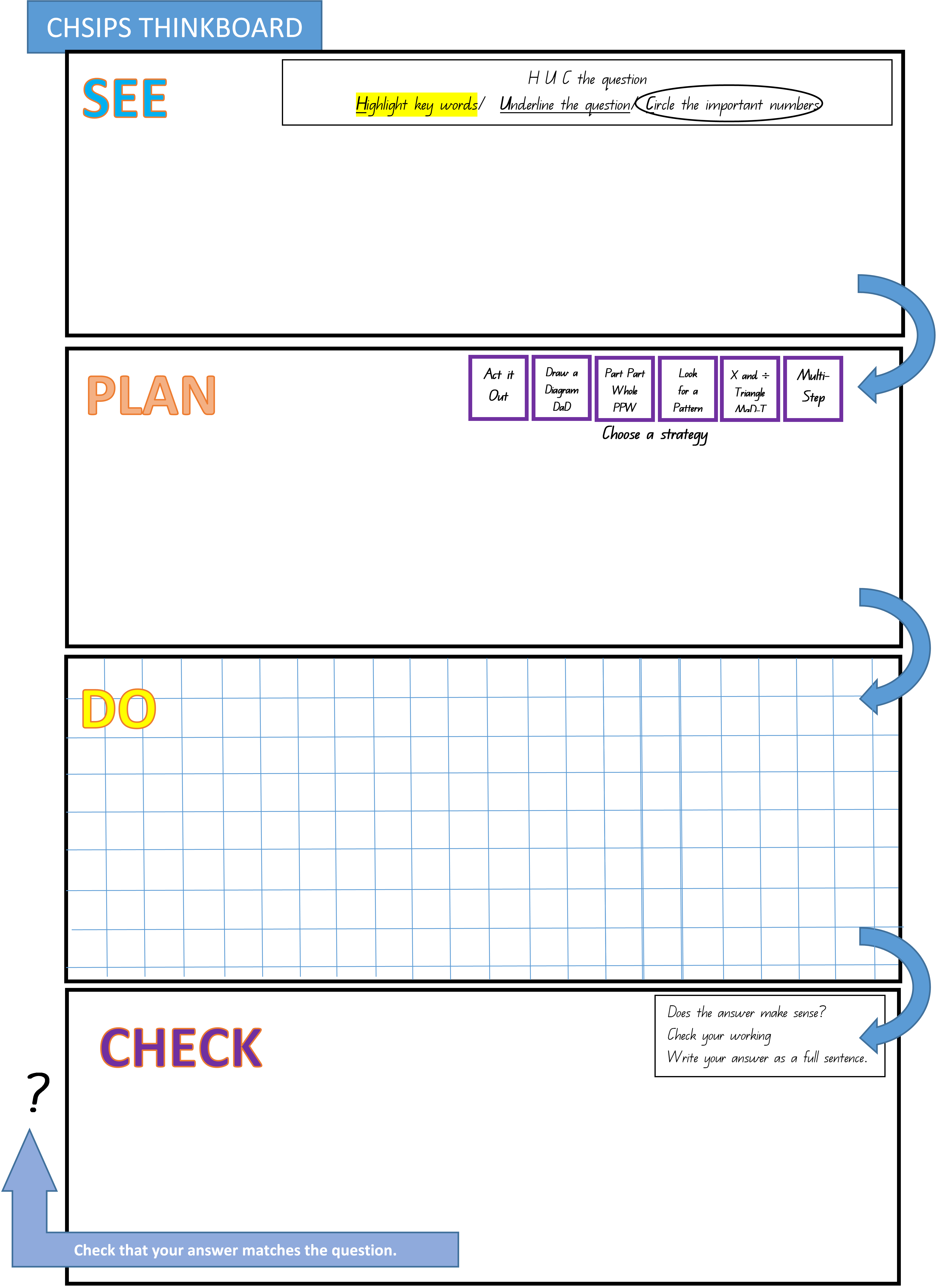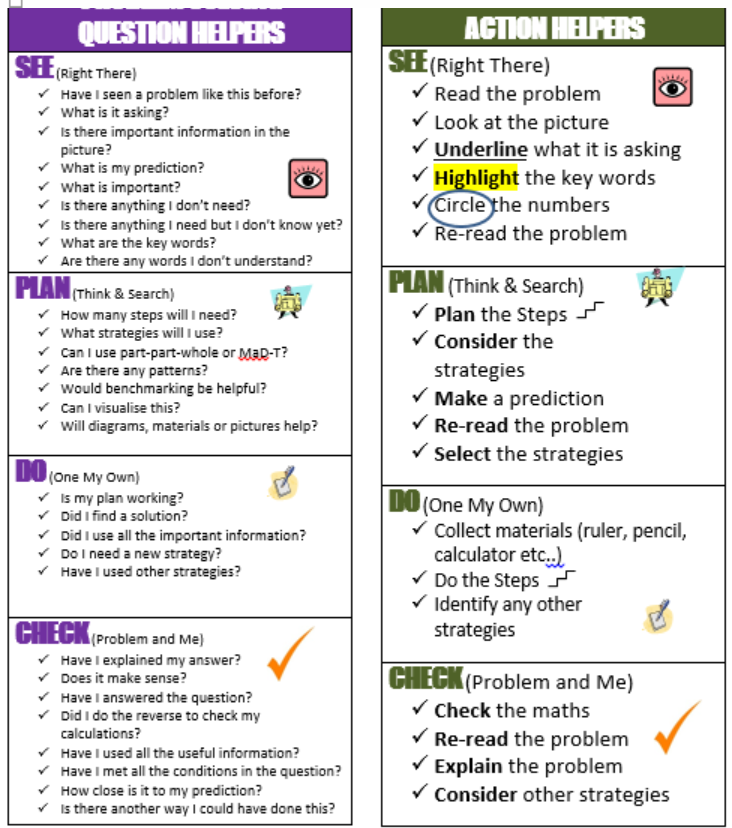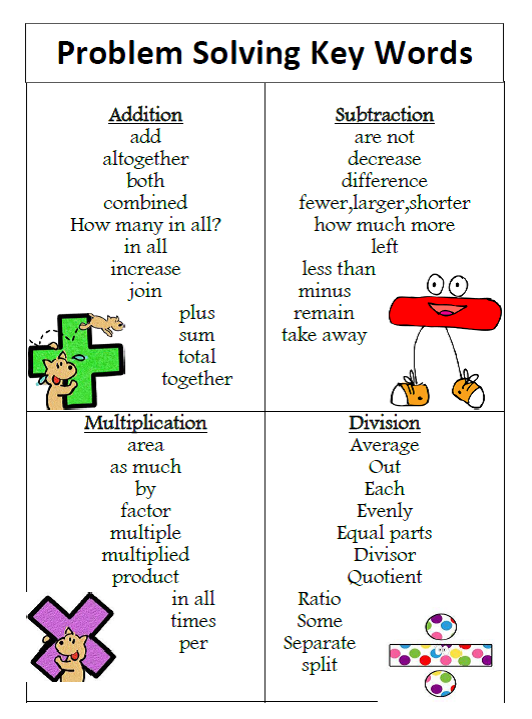IMPACT (Inspire, Model, Practise, Connect, Apply, Transform)
IMPACT numeracy focuses on teaching and practising problem solving. All students in years 2 and 4 take part in IMPACT maths over a 12 week period in Semester 2. They work in small groups with a teacher or teacher aide.
Navigating word problems in numeracy can be challenging for many reasons including academic vocabulary, reading level requirements and the multiple steps required. Through the program students are explicitly taught specific strategies and a process for solving numeracy problems. This process is research based (George Polya) and proven to assist all students. It is simple but very effective. This process of SEE ... PLAN ... DO ... CHECK is explicitly taught to the whole class and the Thinkboard is used to systematically solve problems. (See sample Thinkboard below).

When solving Numeracy problems students need to read the question thoroughly. We teach them to H.U.C. the problem. This involves three steps.
- Highlight the Key Words:
They identify key words that indicate specific mathematical operations.
- Underline the question:
This ensures that they are focused on answering the exact question that
is being asked.
- Circle the numbers: They need to identify the numbers
that are relevant to solving the problem and make sure they avoid the numbers
that are distractors.

Specific questions and action prompts are used at each state of the process.

The six strategies are:
Act it Out: This is a strategy where students physically act out what is taking place in the word problem. They might 'do it', 'draw it', 'make it', 'read it' or 'fold it'.
PPW - Part Part Whole: Part-part-whole thinking refers to how numbers can be split into parts. It allows students to see the relationship between a number and its component parts. As a result, students generalise the connections between addition and subtraction.
DaD - Draw a Diagram: This is where students make a visual representation to solve the problem. They can draw either a table, a number line or a fraction diagram such as fraction bars or fraction pies.
Looking for a Pattern: Find a Pattern is a strategy in which students look for patterns in the data in order to solve the problem.
MaD-T - Multiplication and division triangle: When there are key words or aspects of a question that indicate equal size groups the students know that it could be referring to the relationship between multiplication and division. Use of the MaD-T allows students to clearly see this relationship.
Multistep: This strategy is used when a solution to the problem requires 2 or more steps and perhaps a more than one strategy.
Through the principles of 'Reading to Learn' there is a strong emphasis on the language of mathematics. Students are taught to identify key vocabulary related to various operations and mathematical concepts and strategies.
